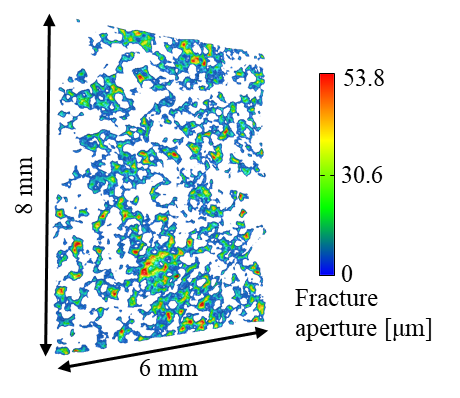Fluid Transport in Fractures
Contact: Tomos Phillips
Fluid flow and transport through rock fractures is significant to many natural processes (e.g. fault rupture) and subsurface engineering activities (e.g. enhanced oil recovery, geothermal heat extraction, and energy or waste storage). Fracture flow is underpinned by a complex interplay between the geometrical and chemical heterogeneity of the fracture wall rock, and the coupling of fluid flow and effective stress. How fracture properties, such as surface roughness and aperture (void space) distribution, impact the flow of one or more fluids is crucial information needed to guide and constrain numerical models. We use a combined 3D printing and X-ray micro-computed tomography to consistently reproduce and investigate properties akin to those observed in natural rocks. 3D printing alleviates some of the uncertainties associated with natural rocks, facilitating investigation into the primary controls on fluid flow, thereby bridging the gap between laboratory tests and numerical simulations.
This project has been subsidised through the ERANET Cofund ACT (Project no. 271497), the European Commission, the Research Council of Norway, the Rijksdienst voor Ondernemend Nederland, the Bundesministerium für Wirtschaft und Energie, and the Department of Business, Energy & Industrial Strategy, UK. This work is also part of a project that has received funding by the European Union’s Horizon 2020 research and innovation programme, under grant agreement number 764531.

Fracture aperture distribution in a 3D-printed fracture under confinement.